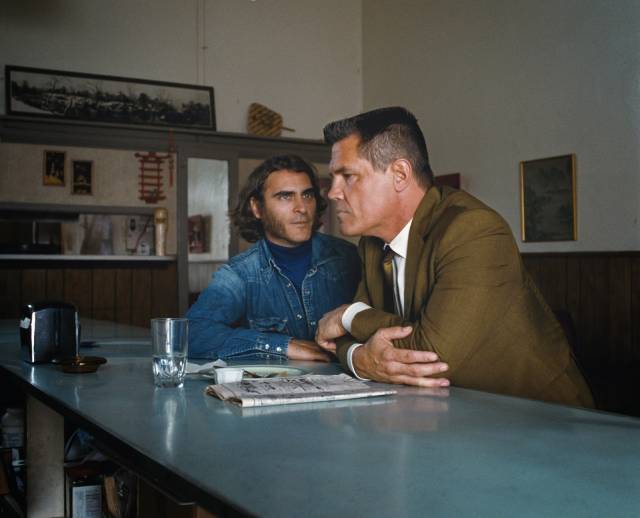
 At first glance, Paul Thomas Anderson’s Inherent Vice seems like a return to the energetic, large ensemble pieces that marked the first part of his career (Boogie Nights in particular, because of the 1970 setting), but look closer and within the labyrinthine plot, non-sequiturs and pitch-perfect casting, you will find the same perturbed sense of disillusion and hopelessness found in his more recent “smaller” pieces. It seems as if he was using the protagonists from The Master and There Will Be Blood to perfect formulas he could then apply to each and every single character in his future films, which is why it often feels as if every single person we see onscreen in Inherent Vice, could perfectly warrant his or her own film.
At first glance, Paul Thomas Anderson’s Inherent Vice seems like a return to the energetic, large ensemble pieces that marked the first part of his career (Boogie Nights in particular, because of the 1970 setting), but look closer and within the labyrinthine plot, non-sequiturs and pitch-perfect casting, you will find the same perturbed sense of disillusion and hopelessness found in his more recent “smaller” pieces. It seems as if he was using the protagonists from The Master and There Will Be Blood to perfect formulas he could then apply to each and every single character in his future films, which is why it often feels as if every single person we see onscreen in Inherent Vice, could perfectly warrant his or her own film.
That’s obviously not the case, instead we focus our attention on Doc Sportello (Joaquin Phoenix), a private eye conducting his practice from a medical office where clients, informers and an assortment of lunatics arrive to seek his help. Sportello, who always seems to be under the influence of narcotics, takes notes on his pad that rarely have anything to do with what he’s being told (when a client mentions the Spanish word for “sorrow”, he writes down “something in Spanish”) and yet somehow, he still finds himself closer to solving his case, “don’t worry, the thinking comes later” he explains.
The case he’s trying to solve this time around (the film can’t help but feel like it exists as one in many) is the mysterious disappearance of his ex-girlfriend Shasta Fay Hepworth (Katherine Waterston in a star-is-born turn) who might have been involved in a large conspiracy involving real estate moguls, corrupt policemen and an innumerable amount of random suspects. Anderson has become an expert world-builder and his seedy Los Angeles, which seems to exist within a cloud of marijuana smoke, is the paranoia capital of the world. Traumatized by the Charles Manson murders, everyone is always high, to either ease the anxiety or lessen the blow of unexpected death. “Any gathering of three or more civilians is now considered a cult” apologizes a cop after stopping a car Sportello is riding in.
This Los Angeles by default can’t help but feel like a critique of the vapidness of Tinseltown, especially when it comes to loneliness. The characters in this film seem to be drawn to each other, because they crave to be with someone else, whether for security or emotional neediness, it’s anyone’s guess. Remarkably, despite the film’s many laugh-out-loud sequences, Anderson shows profound compassion for these characters, his use of music and popular songs is interesting, because he makes an effort to never leave his characters alone. He might be using a song non-diegetically, but then he’ll transfer that song to a radio the character is listening to, giving him the power to turn it on and off, in a way allowing him to create his own bubble of comfort.
Inherent Vice is also a fascinating dissection of noir and its similarities to The Big Lebowski, Chinatown and The Long Goodbye will no doubt come to mind, but more than anything, Anderson turns the film into an obsessive study of literary noir, and other than paying homage to Thomas Pynchon for obvious reasons, it’s Anderson studying the ways in which unreliable narrators can be used onscreen. Interestingly enough the film isn’t narrated by Doc, but by an ethereal supporting character named Sortilège (Joanna Newsom) who might very well just live inside Doc’s mind. Through the dichotomy between her assertive narration and Doc’s hallucinations and misinterpretations, Inherent Vice challenges us to become active viewers in a way films rarely do. Coming out of it like from a hazy dream, it seduces us into trying to reconstruct it long after we’ve seen it.